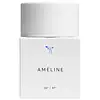What's inside
What's inside
 Concerns
Concerns

 Ingredients Side-by-side
Ingredients Side-by-side

Water
Skin ConditioningAlcohol Denat.
Antimicrobial2,4-Dimethyl-4,4a,5,9b-Tetrahydroindeno-1,3-Dioxin
PerfumingDodecahydro-Tetramethylnaphthofuran
Perfuming3-Methyl-4-(2,4,6-Trimethyl-3-Cyclohexenyl)-3-Buten-2-One
PerfumingCitronellol
PerfumingCitrus Aurantium Bergamia Fruit Oil
MaskingDimethylcyclohexylethoxy Isobutylpropanoate
MaskingDipropylene Glycol
HumectantEthyl Linalool
MaskingEthylene Brassylate
MaskingLinalool
PerfumingMethylcyclopentadecenone
MaskingMethyldihydrojasmonate
MaskingMethylenedioxyphenyl Methylpropanal
PerfumingWater, Alcohol Denat., 2,4-Dimethyl-4,4a,5,9b-Tetrahydroindeno-1,3-Dioxin, Dodecahydro-Tetramethylnaphthofuran, 3-Methyl-4-(2,4,6-Trimethyl-3-Cyclohexenyl)-3-Buten-2-One, Citronellol, Citrus Aurantium Bergamia Fruit Oil, Dimethylcyclohexylethoxy Isobutylpropanoate, Dipropylene Glycol, Ethyl Linalool, Ethylene Brassylate, Linalool, Methylcyclopentadecenone, Methyldihydrojasmonate, Methylenedioxyphenyl Methylpropanal
 Reviews
Reviews

Ingredients Explained
These ingredients are found in both products.
Ingredients higher up in an ingredient list are typically present in a larger amount.
Alcohol Denat. is an alcohol with a denaturant property. It is created by mixing ethanol with other additives.
This ingredient gets a bad rep because it is irritating and drying - mostly due to its astringent property. Astringents draw out natural oils in tissue, constricting pores and leaving your skin dried out.
However, alcohol denat. is not all that bad.
Due to its low molecular weight, alcohol denat. tends to evaporate quickly. One study on pig skin found half of applied alcohol evaporated in 10 seconds and less than 3% stayed on skin.
This also helps other ingredients become better absorbed upon application.
Studies are conflicted about whether this ingredient causes skin dehydration. One study from 2005 found adding emollients to propanol-based sanitizer decreased skin dryness and irritation. Another study found irritation only occurs if your skin is already damaged.
Small amounts of alcohol are generally tolerated by oily skin or people who live in humid environments.
The rule of thumb is if this alcohol is near the end of an ingredients list, it will probably not affect your skin much.
Also...
This ingredient has antimicrobial and solvent properties.
The antimicrobial property helps preserve products and increase their shelf life. As a solvent, it helps dissolve other ingredients.
Other types of astringent alcohols include:
Learn more about Alcohol Denat.Citronellol is used to add fragrance/parfum to a product. It is often derived from plants such as roses. In fact, it can be found in many essential oils including geranium, lavender, neroli, and more. The scent of Citronellol is often described as "fresh, grassy, and citrus-like".
Since the Citronellol molecule is already unstable, Citronellol becomes irritating on the skin when exposed to air.
Citronellol is a modified terpene. Terpenes are unsaturated hydrocarbons found in plants. They make up the primary part of essential oils.
Citronellol is not able to be absorbed into deeper layers of the skin. It has low permeability,
Citronellol is also a natural insect repellent.
Learn more about CitronellolLinalool is a fragrance and helps add scent to products. It's derived from common plants such as cinnamon, mint, citrus, and lavender.
Like Limonene, this ingredient oxidizes when exposed to air. Oxidized linalool can cause allergies and skin sensitivity.
This ingredient has a scent that is floral, spicy tropical, and citrus-like.
Learn more about LinaloolWater. It's the most common cosmetic ingredient of all. You'll usually see it at the top of ingredient lists, meaning that it makes up the largest part of the product.
So why is it so popular? Water most often acts as a solvent - this means that it helps dissolve other ingredients into the formulation.
You'll also recognize water as that liquid we all need to stay alive. If you see this, drink a glass of water. Stay hydrated!
Learn more about Water